Someone brought this wonderful pile of memorabilia to CCCKC last week.

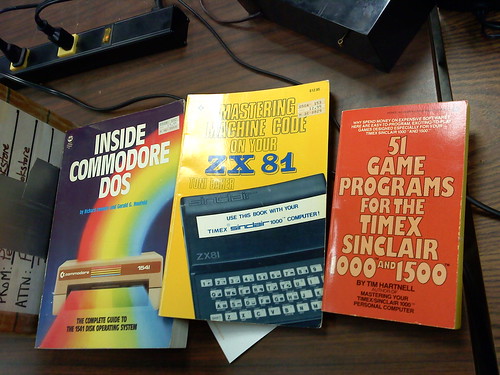
Someone brought this wonderful pile of memorabilia to CCCKC last week.


Labels: computing, retro, timex sinclair, z80
I love OS X, and I also have this thing for Apple hardware, especially their laptops. You can rant and rave about "Apple Tax" until you're blue in the face. You won't sway me. One thing that kind of irks me, though, is the keyboard on the MacBook series.
While the sunken, chicklet-style keyboard garnered much criticism in 2006, I like the feel of it. As you can probably tell from the title of this article, my primary complaint isn't in the style of the keyboard. It's in the keys that seem to be missing. In OS X, the MacBook's scant 78-key input device makes sense. Other keys are nice, and are provided on the full-size keyboards for the desktop behemoths, but as a general rule, the slimmed-down laptop keyboard gets things done.
Being an Operating System Junkie, however, I often find a need for some oddball key that's nowhere to be found. In Linux and BSD (or when SSH-ing) from Windows using PuTTY, Shift-Insert pastes text to the terminal. There's no Insert key. In Windows, I'd rather not install vestigial bloatware to grab screen shots. Alt-PrintScreen is the old standby. There's no PrintScreen button, either.
At the same time, there are keys I rarely use in OS X, and they become completely useless on any other platform. They also happen to be near the places that I expect Insert and PrintScreen to be on a full-size keyboard.
There are registry hacks to remap keys on Windows. RandyRants has a great write-up on this, and wrote SharpKeys to help people easily re-map their keyboards. In my case, I wanted to remap F12 to function like PrintScreen, and the Keypad Enter key (next to the arrows, shown prominently in the photo above) to function as the Insert key.
The resulting registry patch is included so that you need not install vestigial bloatware just to remap your MacBook keyboard. Save the text below to a file called "remap.reg" and import it to your Windows Registry -- usually, by double-clicking it. Still, SharpKeys a nice utility to know about, particularly if you have any portable computers lacking a full set of keys.
On Linux and BSD, xmodmap will do the same thing, a lot easier. I didn't bother remapping Print Screen, but getting Enter to function as Insert was important. Create a file called ".xmodmaprc" in your home directory, and add the following content to it:Windows Registry Editor Version 5.00
[HKEY_LOCAL_MACHINE\SYSTEM\CurrentControlSet\Control\Keyboard Layout]
"Scancode Map"=hex:00,00,00,00,00,00,00,00,03,\
00,00,00,37,e0,58,00,52,e0,1c,e0,00,00,00,00
The next time you log in to Ubuntu, you'll get a dialog asking what you want to do with this file:keysym KP_Enter = Insert Insert Insert Insert
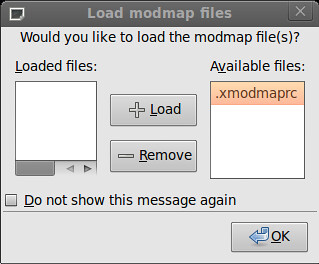
These tricks work just as well on bare metal as they do in a virtual machine, or at least as tested in VirtualBox. That's a major annoyance out of the way for me!xmodmap .xmodmaprc
A few weeks ago, my trusty LG Env3 met its untimely demise in a washing machine. I immediately yanked the battery out first. None of the usual tricks worked. I tried many of them, but here are a few that HAVE worked for me in the past with other peoples' phones:

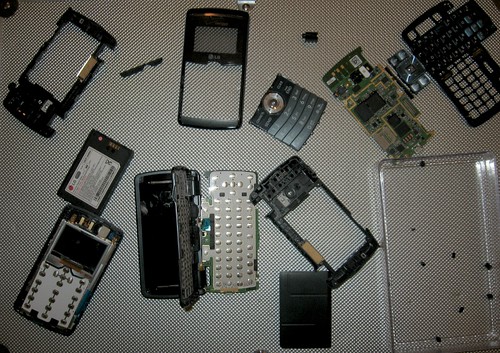



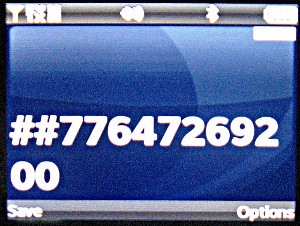
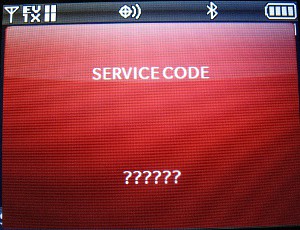
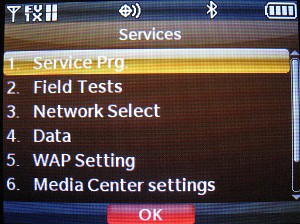
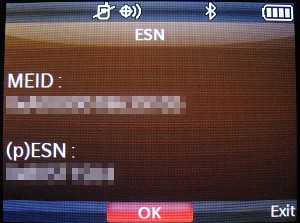
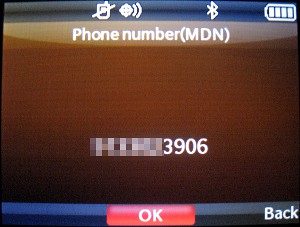

I ran across a bizarre Windows issue today on a friend's laptop. It appears to be relatively common, but the answers seem to be elusive, or all over the map. Not only was there an "NTLDR Missing" error, but in trying to access the Recovery Console, the Windows XP Install CD was halting as a blank screen right after "Setup is inspecting your computer's hardware..."
The short answer:
The partition table or boot sector is corrupt and it's messing with Setup when it scans your hard drive and causing the lock up before the installer starts. You are going to have to delete the partition and re-install Windows from scratch. I hope you have backups! Of course, if you prefer, now's a good time to try some other Operating Systems. ;)
The long answer:
Normally, "NTLDR Missing" errors are easy to fix with the recovery console of the Windows install CD or with 3rd party tools like FixNTLDR, UBCD or BartPE (builds a live-CD from your Windows install CD)
The first things to try are replacing the core boot files from the pristine versions on the XP CD (as per the Microsoft KB article) -- ntdetect.com, ntldr, and verify that the syntax of boot.ini is valid. Also, running fdisk /mbr can fix certain boot problems. These should be non-damaging to the data on your drive. You should try to fix it before you go blowing away the partition table.
In my case, none of the third party tools were working, and all the Windows XP CDs I have failed to boot past the "Setup is inspecting..." screen on this machine. The screen went dark and the CD stopped spinning, the system hung and refused to boot. No boot means no recovery console. I tried using the Windows 7 CD, too. It would boot but couldn't find a valid windows partition to repair.
My next step was to boot into Backtrack 4 Final from USB, and try to replace the files as one would from the Windows Recovery Console. I was able to write to the hard drive, and get the files off the OEM Restore CD just fine. Boot.ini was also intact. Still, the system wouldn't boot from the hard drive or the XP install CD.
As mentioned above, it was time to blow away the partition table and start over. Fortunately, my friend had good backups on an external hard drive. I opted to use BackTrack 4 Final to perform the partition-ectomy. Several boot CDs can do this, too. YMMV.
Deleting the partition with BackTrack is simple. Once you have booted backtrack, execute "cfdisk /dev/hda" - This assumes you have only one hard drive in the machine, and that there's only Windows XP installed.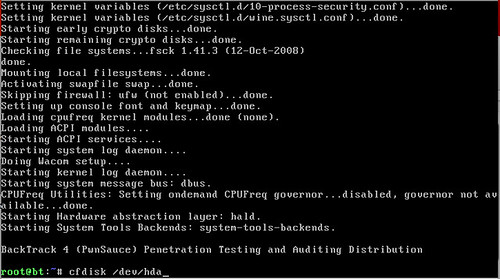
Select the partition using the up/down arrow keys and navigate with the left/right arrow keys to the "Delete" menu option. You may be wondering what I'm doing with a scant 2GB hard drive. This is actually a Windows XP Virtual machine, used for lab testing.
Then, use the arrow keys to navigate to the "Write" option.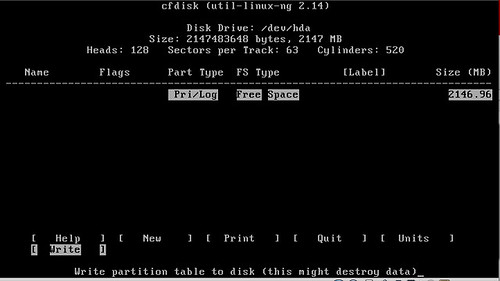
Quit cfdisk, then reboot with your Windows CD to start the installation process.
 On a whim, I picked up a Master Lock 1500iD a few weeks ago. Mostly, this was for physical security research because I was bored at the time. Well, and I wanted a new lock for keeping my bike locked up at the job I used to have.
On a whim, I picked up a Master Lock 1500iD a few weeks ago. Mostly, this was for physical security research because I was bored at the time. Well, and I wanted a new lock for keeping my bike locked up at the job I used to have.
Labels: lockpicking, locks, physicalsecurity
A while ago, John from TAOSSA mentioned something under his breath (or as much as one can do so with a keyboard) about Gentoo Linux. I replied with the fact that I learned the (very) hard way that if you think you want to play with Gentoo, you actually want to play with Arch Linux.
Labels: bsd, FreeBSD, linux, openbsd, Operatingsystems
I am officially on the prowl for a new job. I have many passions related to technology, security, and writing. I'm currently in Kansas City and if the deal is sweet enough, I'd be willing to relocate. I have a quiet, distraction-free home office that's perfect for telecommuting if you're not in the area. If you know someone who could put my skills to good use, let me know. I can be reached via e-mail at ax0n (at) h-i-r.net or via GVoice: 913-259-4HiR. Full Resume available upon request.
I'm genuinely jazzed about what opportunities lie ahead for 2010!